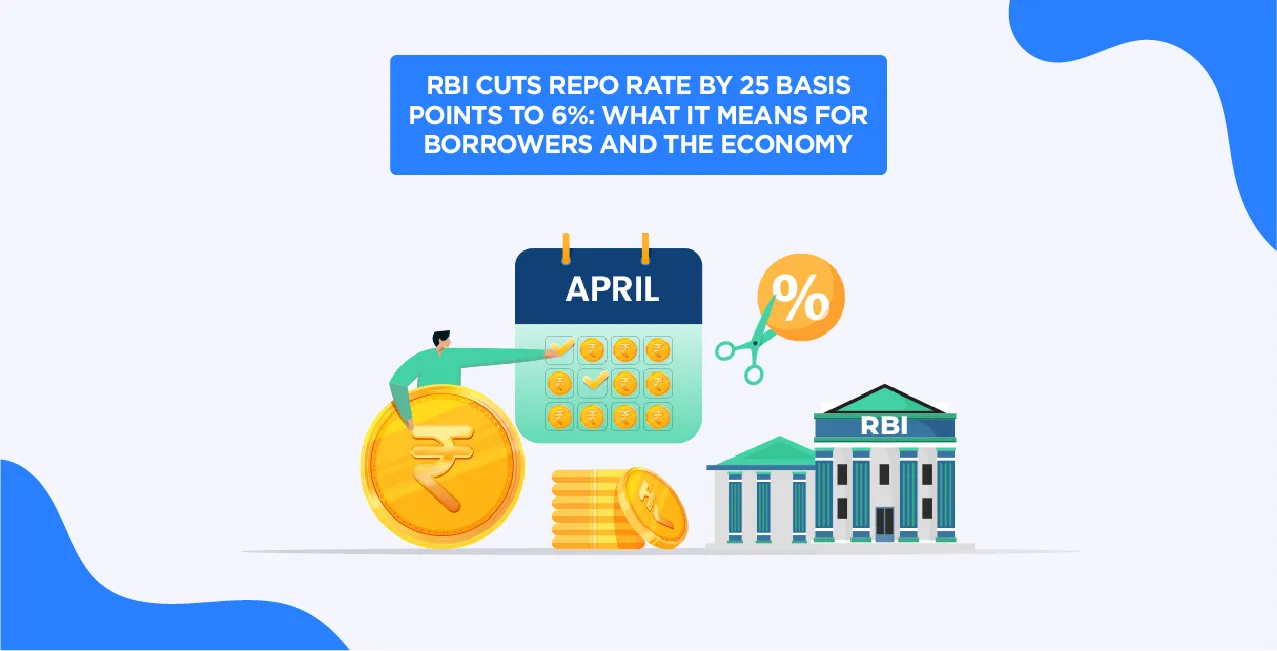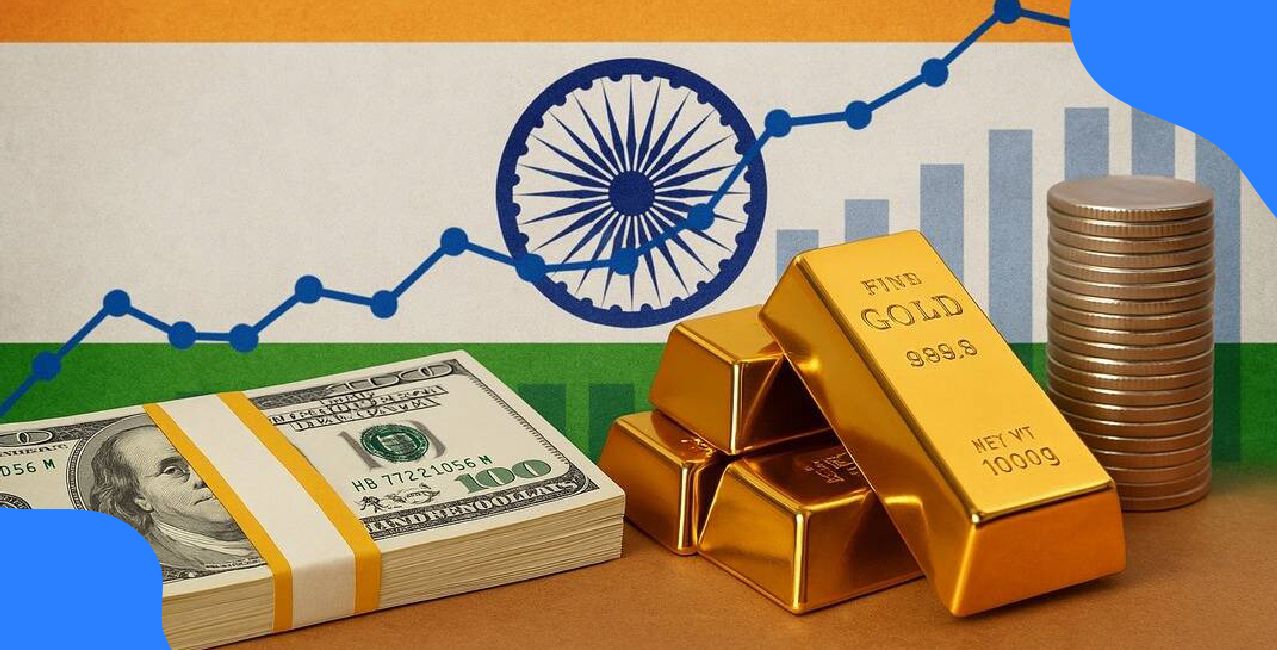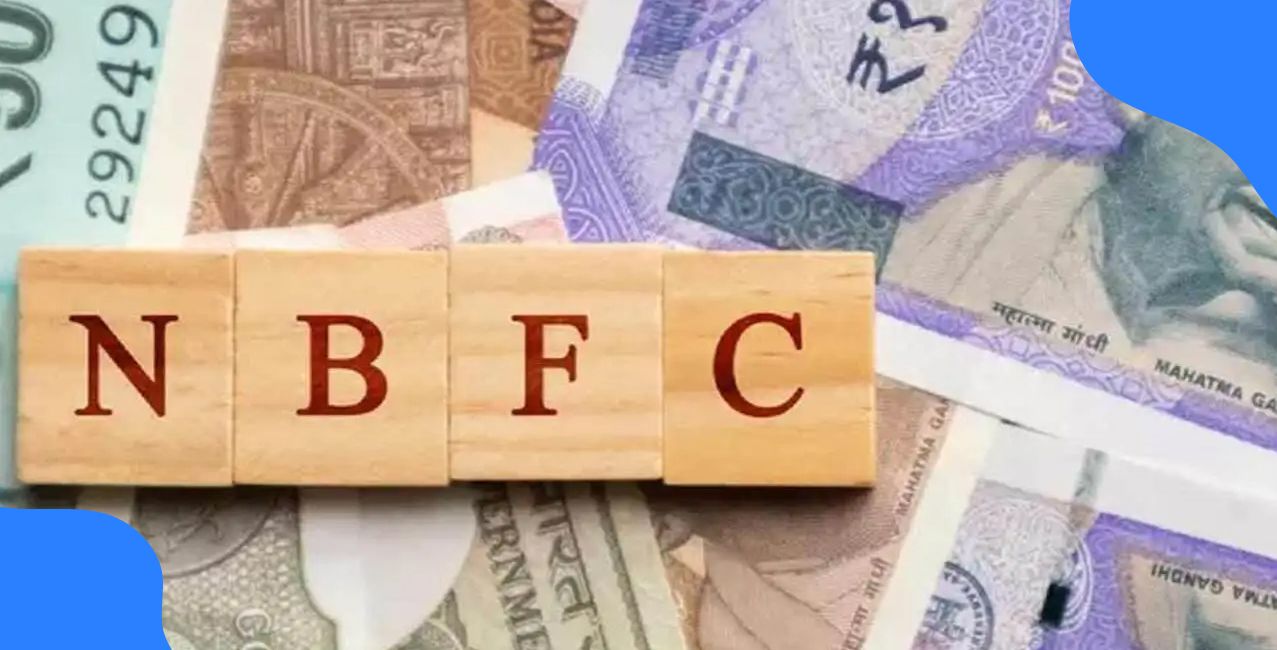
Author
Siddhanshi Sharma
Read Time
6 Minute
10 Apr 2025
RBI Cuts Repo Rate by 25 Basis Points to 6% – Impact on Loans & Economy (April 2025)
A marketing agency owner, Simran took out a home loan worth ₹ 1 Crore. With a 14% interest rate, she had to repay the loan in 20-odd years. In February 2025, Simran received good news that the RBI had slashed the repo rates by 0.25 basis points, bringing down the borrowing rate to just 6.25%.
After this rate cut, the interest rate of Simran’s business loan went down by 0.25%, making it just 13.75%. Refer to this table below to understand how much she will save with a 0.25% plunge in the interest rate:
Rate of Interest | 14% | 13.75% |
Loan Amount | ₹ 1,00,00,000 | ₹ 1,00,00,000 |
Interest Amount | ₹ 1,99,00,000 | ₹ 1,94,00,000 |
Savings on Interest Amount | - | ₹ 5,00,000 |
EMI Savings | - | ₹ 2000/month, i.e., ₹4,80,000 in 20 years |
If she saved ₹5,00,000 with just 1 rate cut, what will be the effect of another rate cut announced by the RBI on February 9th, 2025?
Will Simran repay the loan at the 13.5% interest rate, or will the rate cut not affect her loan?
RBI Cuts Repo Rate for the 2nd Time in Calendar Year 2025-2026
In a widely anticipated move, the Reserve Bank of India (RBI), on April 9, 2025, announced a 25 basis points (bps) cut in the repo rate, bringing it down from 6.25% to 6%.
Read More - Upcoming RBI Monetary Policy: Will Home Loan Rates Increase?
This marks the second consecutive rate cut this calendar year, signalling the central bank’s intent to stimulate economic growth amidst global uncertainties and easing inflationary pressures.
Look at this blog to learn about the RBI’s previous rate cut from 6.50% to 6.25% and its impact on the borrowing sector.
What is a Repo Rate?
The repo rate—the rate at which the RBI lends to commercial banks—is a crucial tool for controlling liquidity and inflation in the economy. A cut in repo rates typically reduces banks' borrowing costs, leading to cheaper loans for consumers and businesses.
Disclaimer: The RBI's cut in repo rates will only impact loans with floating interest rates linked with repo rate. For this regulation to positively impact the loan’s payoff, original tenure should be more than 7 years.
Key Highlights of the Monetary Policy Announcement
The RBI’s six-member Monetary Policy Committee (MPC), led by Governor Sanjay Malhotra, voted unanimously in favour of the rate cut. In its statement, the MPC emphasised that the move aims to “support growth while keeping inflation within the target”.
The central bank also revised India’s real GDP growth forecast for FY2025 downwards from 6.8% to 6.5%, citing declining private consumption and global trends regarding reciprocal tariffs. However, it maintained a cautious stance, indicating that further rate cuts could be explored “if the evolving macroeconomic conditions warrant it.”
EMIs Set to Get Cheaper: Relief for Home, Auto, and Education Loan Borrowers
With the repo rate now at 6%, home loan EMIs are expected to fall by approximately ₹600-₹1,200 for loans ranging from ₹30 lakh to ₹50 lakh, depending on the loan tenure and interest rate reset cycle. Auto loan borrowers, particularly those opting for floating-rate loans, are also likely to see their monthly outgo reduce slightly.
According to RBI’s statements, a 0.25% rate cut translates into substantial savings over the loan tenure. For example, on a ₹40 lakh home loan for 20 years, borrowers can save up to ₹3.2 lakh in total interest payout.
Banks are expected to adjust their marginal cost of lending rates (MCLR) and repo-linked lending rates (RLLR) in the coming weeks, reflecting lower EMIs.
Impact on Depositors: FD Returns May Dip
While borrowers have reason to cheer, fixed-income (FD) investors may see a marginal decline in interest rates. As banks reduce their lending rates, deposit rates—particularly for short- to medium-term FDs—could be trimmed to maintain spreads.
Senior citizens, who largely depend on interest income, might need to explore alternate fixed-income avenues like the Senior Citizen Savings Scheme (SCSS), RBI Floating Rate Bonds, or select corporate FDs to maintain their returns.
Stock Market Reaction: Nifty, Sensex End Higher
Equity markets responded positively to the rate cut, with the Sensex closing 285 points higher and the Nifty gaining 95 points on April 9. Banking and real estate stocks led the rally, reflecting investor optimism about improved credit growth and residential demand.
Market analysts believe the rate cut could be a short-term catalyst for sectors sensitive to interest rates, such as housing, infrastructure, and automobiles.
RBI’s Stance: Accommodative but Watchful
Despite the back-to-back rate cuts, the RBI maintained its “withdrawal of accommodation” stance, signalling that its policy focus remains balanced between supporting growth and ensuring price stability.
Also Read - How Rising (or Falling) Interest Rates Could Affect Your Next Loan?
Governor Malhotra noted that “the inflation trajectory is expected to remain within the 4%-4.5% range over the next two quarters,” driven by stable fuel prices and easing food inflation. However, he also warned of global crude oil volatility risks and weather-related supply shocks.
The central bank reiterated its commitment to maintaining adequate liquidity and ensuring the smooth transmission of rate cuts to the real economy.
Conclusion
The 25 bps cut in the repo rate to 6% is a timely boost for borrowers, especially those planning large-ticket purchases like homes and vehicles. However, the overall benefits hinge on banks swiftly passing on the reduction through lower lending rates. While the move is likely to spur demand, the RBI remains cautious, keeping a close watch on global and domestic indicators before making further policy decisions.
For now, the repo rate at 6% marks the lowest level since early 2023, and consumers and businesses hope this signals a sustained low-interest phase to support broader economic revival.
Disclaimer: The research team at LoansJagat has framed this blog with the help of an example in the beginning. Please don’t adhere to the example mentioned above as an official statement. This blog shall be utilised for informational purposes and not for making critical financial decisions.
About the Author

Siddhanshi Sharma
Siddhanshi Sharma is a reader's writer, like there is a director's actor. She has trained herself to understand the reader's intent and their queries. With over 4+ years of experience in the content writing industry. Siddhanshi has authored many blogs and articles for several BFSI organisations. While you are reading this blog, she is probably reading her blogs to identify some more mistakes that she overlooked.

Quick Apply Loan
Subscribe Now
Related Blog Post

LoansJagat Team • 11 Dec 2025

LoansJagat Team • 11 Dec 2025

LoansJagat Team • 12 Dec 2025